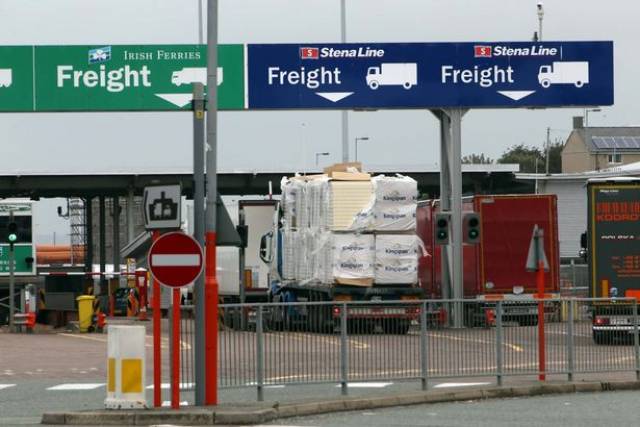#FerryNews - Trucks in their hundreds roll off the docks at Holyhead every day, bringing goods to and from Ireland in an economic lifeline for this deprived corner of Wales, which is now threatened by Brexit, reports France24.
Just 73 miles (117 kilometres) from the Irish capital Dublin, the port's future will depend on how any Brexit deal affects two borders -- the one between EU member state Ireland and Britain and the one between Northern Ireland and mainland Britain.
The concern for many here is that companies will start finding alternative trade routes for goods travelling between Ireland and continental Europe to avoid Britain after Brexit.
With negotiators still at loggerheads in Brussels ahead of a key EU summit on Wednesday and Thursday, concern about increased checks is already forcing some companies to change tack.
Ray Cole, transport director at Virginia International Logistics, said his company was already using the service from Dublin to Cherbourg in France "whenever we can".
The cost for Holyhead, Britain's second biggest roll-on/roll-off terminal after Dover and an area that voted narrowly to leave the European Union in the 2016 referendum, would be high.
"The problem that we have, it could affect jobs," said Michael Hartnett, a 50-year-old Irish truck driver. Port users had "zero information" about what Brexit deal to expect, he added.
The port sustains 650 jobs directly, according to Carwyn Jones, (First Minister of Wales: see Dun Laoghaire RMS Leinster story) and councillor on the island of Anglesey where Holyhead is located. Jones said the port was "absolutely crucial here to us".
At three-and-a-half hours, the link is the fastest between the Republic of Ireland and Britain, making Holyhead a key hub for major industries such as agri-foods, automobiles and medicine.
To read more including the costs potentially facing Holyhead but also a potential return of ferries operating duty free, click here.
































































